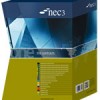Clouds of Vagueness
KRIs

Risking NEC3
I’m getting slightly obsessed with NEC3. As I’ve posted before, here and elsewhere, these forms of contract are intended to promote good practice in project management but, as far as risk is concerned, do not lay out very clearly what is intended. This is reinforced by what I see in my travels which is a […]

Risk in NEC3
I’ve been doing some much-needed professional development by finally getting properly up to speed on NEC3. This is what was formerly known as the New Engineering Contract – like BAA the letters don’t stand for anything anymore – which was designed to simplify the way construction projects were commissioned and managed. NEC3 is the most […]

Resilience (Part 2): aircraft carriers on the lawn
In the previous article I explored resilience in the way it is described in the WEF global risk report. It was hard to find much that distinguished it from a conventional risk management approach – listing actions against risks – apart from: a recognition that things look different at different scales – the global uncertainty […]

Risk appetite – a bad idea
It’s a truism that you can’t do anything – or even nothing – without taking risk. This is an important issue for all organisations, but the discussion of what risk to take has become unnecessarily obscured. Specifically it has become bogged down in the unhelpful concept of ‘risk appetite’ and this has added to the […]

Organisational risk taking – a simple view
At the core of organisational risk management lies the question of what risks to run. You know the organisation cannot achieve its purpose with certainty. You know you can take steps to control risk – to some extent. You know that your chance of success will be improved if you seek out and grasp opportunities. And you think […]

The RARA model – how relevant to organisations?
A very useful model for thinking about risk taking has been created by David Hillson and Ruth Murray-Webster. In contrast to the IRM guidance it is rigorous and well thought through. The model consists of an influence diagram in which the nodes and influences have been well-defined. Thus the model makes an interesting and valuable contribution to the risk […]